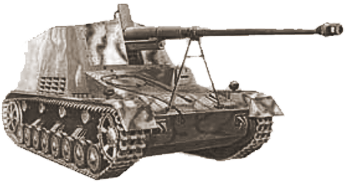Operation Cobra: The Plan and Opposing Forces

Codenamed Cobra, the Allied breakout from the Normandy Beachhead finally began late in July 1944 after a brief but intense planning stage. In directing Cobra U.S. General Omar Bradley left nothing to chance; as Cobra's objective was nothing less than breaking out of the bridgehead in Normandy in which the Allied army's had been bottled up for the better part of two full months. Bradley's plan was two-tiered; he first sought to breakthrough the German defensive positions near the Norman town of St. Lo, and then, second, turn loose General Patton's' newly activated Third Army to cut off the Brittany peninsula from France. After securing his flanks Patton would then race for the Seine River to the east and then beyond. On the Allies' left flank Montgomery, pursuing his own ambitious offensive, would mostly maintain the pressure on the German defenses near Caen and deny German reinforcements from switching across the front to stop Cobra. Ultimately, the armies under Montgomery would serve as a pivot point for the allies once the German front collapsed under the Americans assault. If Bradley's plan developed as expected the allies could finally destroy the German armies in Normandy.
Weeks of planning set up Cobra. The allies stockpiled immense quantities of supplies to guarantee not only penetrating the German lines, but also to ensure the success envisioned for the subsequent breakthrough. The Americans prepared a massive aerial and artillery bombardment to support Cobra, as the American reliance on firepower continued to comprise her primary weapon for battering through the German defenses. To that end, Bradley amassed approximately 2,500 bombers and fighter-bombers to hammer German positions sited within a small box totaling just six square miles of land west of St. Lo, with the bombers set to roll across the front in staggered waves depositing an aggregate total of 4,000 tons of bombs.
The American VII Corps, led by General Joseph "Lighting Joe" Collins, spearheaded the planned breakthrough. Collins ordered two infantry divisions to wrench open a hole in the German front, and then hold open the breach's shoulders as one infantry and two armored divisions punched through the weakened German defenders. The U.S. infantry would then advance on Coutances, some 15 miles behind the German lines, and the armor would push on to Avranches and beyond. These assault divisions would be the primary beneficiaries of the supporting firepower raining down upon only some 5,000 German soldiers holding the front in Cobra's immediate path.
The Germans had built their defensive positions along the bocage's last stronghold, where the favorable defensive terrain in Normandy began giving way to the more open countryside in central France; land ideal for allied armies built on mobile warfare. The battered but elite Panzer Lehr division would face the brunt of Bradley's assault, and though reinforced with a combat element from the 275th Division and a regiment from the 5th Parachute Division it was hardly capable of stopping what Bradley had planned. The Panzer Lehr, although once one of the most powerful divisions in the German army, by the end of July was a mere shell of itself after nearly two months of constant combat. The Panzer Lehr could only field one-third its authorized strength - all told about 45 tanks and 3,200 infantry. Supporting the Panzer Lehr stood the 2nd SS Panzer Division, with only two companies from the 2nd SS representing the Germans scant armored reserves - hardly enough to stop the Americans if they broke free of the bocage.



Post new comment